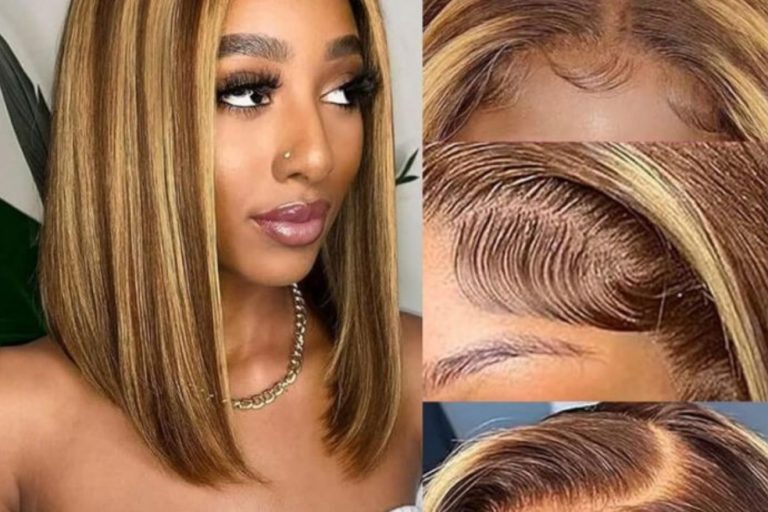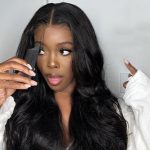“Choosing a Wig for a Sensitive Scalp: A Practical Guide for Moms (No Irritation, No Overheating)” is a collaborative post.
For many mothers, comfort and confidence are equally important. Whether you are managing postpartum scalp changes, recovering from a medical treatment, or simply have chronically sensitive skin, selecting the right wig can make a meaningful difference in daily comfort. This guide focuses on materials, construction, and simple tests you can perform at home to minimize the risk of irritation, sweat buildup, or contact dermatitis. It also includes pragmatic shopping and care advice so you can enjoy a natural look—such as a honey blonde wig—without compromising scalp health.
Understand what “sensitive scalp” means in practice
A sensitive scalp can show up as redness, itching, burning, flaking, or a tendency to develop contact dermatitis when exposed to certain fabrics, adhesives, or hair products. For parents juggling childcare and household demands, the last thing you need is a wig that aggravates symptoms. The goal is not to make medical claims but to offer realistic, low-risk options: choosing a true sensitive scalp wig, prioritizing breathable construction and hypoallergenic materials, and adopting a short trial-and-care routine before committing to long-term wear.
Cap construction: why the interior matters most
The area where the wig meets your skin is the most critical factor.
- Breathable wig cap: Look for caps specifically marketed as breathable or moisture-wicking. Caps with open-weave or mesh panels facilitate air circulation and reduce sweat accumulation that can lead to irritation. Caps labeled as “breathable” often have lighter synthetic meshes or natural-fiber linings; either can be beneficial when combined with regular cleaning.
- Soft linings: Natural fabrics such as cotton or silk (or silk-like satin linings) against the scalp reduce friction and are gentler than rougher synthetics. A soft lining can make a big difference for someone who experiences chafing or redness.
- Monofilament and lace fronts: Monofilament tops and lace-front hairlines create a more natural appearance and frequently use finer, less abrasive materials across the crown and parting areas. If you have a very reactive scalp, ask whether the manufacturer uses medical-grade lace or softer options rather than coarse nylon.
- Seam placement and finishes: Flat seams and well-finished edge bindings reduce pressure points. Avoid caps with exposed or bulky stitching at the hairline or nape; these can rub and cause hotspots during long wear.
- Avoid metal hardware: Some wig caps include metal adjusters or clips. If your scalp is reactive, choose adjustable tabs made from fabric or plastic rather than metal.
Materials and “hypoallergenic” claims
“Hypoallergenic” is a useful descriptor, but it is not legally standardized—what doesn’t irritate most people can still affect a few. Use it as a helpful indicator rather than proof.
- Natural fibers: Cotton and silk linings are generally well tolerated. Silk (or satin) reduces friction and helps preserve hair integrity; cotton is breathable and inexpensive.
- Synthetic meshes: Modern, high-quality synthetic meshes can be breathable and light, but note whether they are finished with chemical coatings that could trigger sensitivity.
- Human hair vs. synthetic: Human hair wigs (including cheap human hair wigs) can provide a natural feel and allow for conventional hair care routines, but lower-priced human hair units may have been heavily processed with dyes and harsh chemicals during manufacturing. Those treatments can leave residues that irritate sensitive scalps. If you consider lower-cost human hair options, ask the seller about sourcing and processing; a reputable seller will disclose whether hair is virgin, remy, or chemically processed.
- Coatings and adhesives: Wigs that require strong adhesives or frequent tape use are riskier for sensitive skin. If you need extra security, explore non-adhesive solutions such as wig grips, adjustable straps, or secure clip-in systems.
How to test a wig safely before committing
A short, methodical trial will save time and discomfort later.
- Patch or contact test: Fold a small square of the same material used for the cap (or an inner lining swatch, if supplied) and tape it to the inside of your wrist for 24 hours. If redness, itching, or blistering occurs, the material may irritate your scalp.
- Short wear test: Wear the wig for an hour at home and monitor for heat, pressure, or itching. Repeat on a separate day for a longer period (2–4 hours). Avoid strenuous activity during the test so that sweat does not confound results.
- Laundry test: If the wig is advertised as prewashed or treated, try washing one item the way you would in normal care before wearing. Residual chemical odor after washing can be a red flag.
- Adhesive check: If adhesives are required, request a removable/low-adhesive option for the trial and perform another 24-hour skin test with the adhesive on a small, non-visible patch of skin.
If you experience consistent irritation, discontinue use and consult a dermatologist. These steps are practical screening methods and are not a substitute for medical diagnosis.
Practical tips for shopping and style choices
- Ask questions of the seller: Reputable vendors will answer queries about cap materials, stitch type, and where the hair (if human) was processed. Don’t hesitate to request detailed photos of the interior cap.
- Consider a wig liner: A thin cotton or bamboo liner can create a barrier between the wig base and the scalp. Liners are inexpensive and can dramatically reduce friction and direct contact with potentially sensitizing materials.
- Color and shading: Selecting a shade such as a honey blonde wig may help you achieve a natural appearance without bleaching or heavy chemical treatments on your own hair—valuable if you are avoiding scalp-contact dyes. For a convincing look, match undertones to your brows and avoid overly bright or flat color blocks that look synthetic under natural light.
- Budget options: Cheap human hair wigs can be tempting, but exercise caution. Lower price often reflects extensive chemical processing, which can leave residues or rougher textures. If budget is a constraint, prioritize cap quality (breathability and lining) even if you choose a more economical hair fiber. A well-constructed cap can mitigate many comfort issues even with less expensive hair.
Daily care and hygiene for sensitive scalps
- Wash regularly but gently: For frequent wear, wash the wig or liner on a schedule appropriate to your activity level—typically every 7–14 wears for human hair when worn daily. Use a sulfate-free, fragrance-free cleanser formulated for sensitive skin.
- Dry fully: Never store or reuse a damp wig. Thorough drying prevents microbial growth and odor buildup.
- Detangle carefully: Use a broad-tooth comb starting at the tips, working upward. Rough brushing can create friction that aggravates the scalp beneath.
- Rotate and rest: If you wear a wig daily, consider alternating between two caps to allow each to air out and reduce continuous pressure on the same scalp areas.
Final considerations and a gentle reminder
Selecting a wig when you have a sensitive scalp is a process of small, iterative choices: prioritize cap architecture and lining, conduct short tests before extended wear, and maintain careful hygiene. If adhesives or prosthetic attachments are under consideration, consult a dermatologist to review options and perform supervised patch tests.
A well-chosen, comfortable wig can restore convenience and confidence—whether it’s a practical, natural-looking honey blonde wig for everyday wear or a budget-conscious option. With awareness, cautious testing, and routine care, many mothers with sensitive scalps can find a solution that looks and feels right without sacrificing scalp health.







Comments are closed.